I love Girls, I love Saturday Night Live, I love Tina Fey, so this was pretty much perfect for me:
An Albanian girl named Blerta moves to Brooklyn and offers sage advice to Hannah, Marnie, Jessa and Shoshanna.
I love Girls, I love Saturday Night Live, I love Tina Fey, so this was pretty much perfect for me:
An Albanian girl named Blerta moves to Brooklyn and offers sage advice to Hannah, Marnie, Jessa and Shoshanna.
Light (aka electromagnetic radiation) is responsible for most of what we know about the universe. By measuring photons of various frequencies in different ways — "the careful collection of ancient light" — we've painted a picture of our endless living space. But light isn't perfect. It can bend, scatter, and be blocked. Changes in gravity are more difficult to detect, but new instruments may allow scientists to construct a different map of the universe and its beginnings.
LIGO works by shooting laser beams down two perpendicular arms and measuring the difference in length between them-a strategy known as laser interferometry. If a sufficiently large gravitational wave comes by, it will change the relative length of the arms, pushing and pulling them back and forth. In essence, LIGO is a celestial earpiece, a giant microphone that listens for the faint symphony of the hidden cosmos.
Like many exotic physical phenomena, gravitational waves originated as theoretical concepts, the products of equations, not sensory experience. Albert Einstein was the first to realize that his general theory of relativity predicted the existence of gravitational waves. He understood that some objects are so massive and so fast moving that they wrench the fabric of spacetime itself, sending tiny swells across it.
How tiny? So tiny that Einstein thought they would never be observed. But in 1974 two astronomers, Russell Hulse and Joseph Taylor, inferred their existence with an ingenious experiment, a close study of an astronomical object called a binary pulsar [see "Gravitational Waves from an Orbiting Pulsar," by J. M. Weisberg et al.; Scientific American, October 1981]. Pulsars are the spinning, flashing cores of long-exploded stars. They spin and flash with astonishing regularity, a quality that endears them to astronomers, who use them as cosmic clocks. In a binary pulsar system, a pulsar and another object (in this case, an ultradense neutron star) orbit each other. Hulse and Taylor realized that if Einstein had relativity right, the spiraling pair would produce gravitational waves that would drain orbital energy from the system, tightening the orbit and speeding it up. The two astronomers plotted out the pulsar's probable path and then watched it for years to see if the tightening orbit showed up in the data. The tightening not only showed up, it matched Hulse and Taylor's predictions perfectly, falling so cleanly on the graph and vindicating Einstein so utterly that in 1993 the two were awarded the Nobel Prize in Physics.
Disney and JJ Abrams are rebooting the Star Wars franchise. This two-minute video outlines four simple rules that could make Star Wars great again.
The rules are:
1. The setting is the frontier.
2. The future is old.
3. The Force is mysterious.
4. Star Wars isn't cute.
Jay Porter recently wrote a series of posts about his experience running a restaurant that abolished tipping. Here's part one:
This is a summary of the experiences I had in our no-tipping lab, and in my next few posts I'll dig a little deeper into each of them. Then I'll finish this series by talking about what I've learned this year from a couple new friends who are researchers from the University of Guelph, and who have brought me in contact with some deeper thoughts about the tipping issue, from the social justice side. After seeing what they and their colleagues have uncovered, I've become convinced that thoughtful cultures who value civil rights will make tipping not just optional but illegal; and that this could actually happen sooner rather than later, when courts assess the reality of the situation.
If you want the Cliff Notes version, Porter wrote a shorter piece for Slate.
When we switched from tipping to a service charge, our food improved, probably because our cooks were being paid more and didn't feel taken for granted. In turn, business improved, and within a couple of months, our server team was making more money than it had under the tipped system. The quality of our service also improved. In my observation, however, that wasn't mainly because the servers were making more money (although that helped, too). Instead, our service improved principally because eliminating tips makes it easier to provide good service.
For his Full Turn project, Benjamin Muzzin mounted two screens back-to-back on a rotating platform and spun them fast, creating the illusion of a holographish 3D image.

And scene! No Kottke.org guest editor takeover would be complete without a birthday card by frequent Kottke.org illustrator, Chris Piascik.
The craziest thing about this thing we put together is that it wasn't until the last minute that we knew for sure it was your 40th birthday. But we figured even if you were turning 39, we were going for it anyway. Thanks for the good times, and for leaving your back door open. We hope you and everyone who reads Kottke.org liked the party we threw.
Aaron, Adam, Ainsley, Anil, Choire, Chris, David, Greg, Joel, Sarah, and Tim!
The Kottke post I probably think about most often is 2009's "One-handed computing with the iPhone." It just has all these perfectly rounded sentences in it, like this one:
A portable networked computing and gaming device that can be easily operated with one hand can be used in a surprising variety of situations.
Try to take the adjectives and adverbs out of that sentence. (Strunk and White say to "write with nouns and verbs, not adjectives and adverbs." Strunk and White are often surprisingly stupid.)
But try adding any more adjectives or adverbs. Try adding in or taking away any of the clauses. Try writing a better sentence that describes the same thing. (This is also known as Mohammed's "produce a better surah" Test.) Try to misunderstand what the sentence means. I'm a professional writer. So is Jason. I appreciate this stuff.
There's also a lot of structural and emotional variety in this post. The author gets mad. He makes jokes. But mostly, he observes. He studies. He empathizes.
People carry things. Coffee, shopping bags, books, bags, babies, small dogs, hot dogs, water bottles, coats, etc. It's nice to be able to not put all that crap down just to quickly Google for the closest public restroom (aka Starbucks).
It is very occasionally necessary to use the iPhone while driving. No, not for checking your stock portfolio, you asshole. For directions. Glance quickly and keep your thoughts on the road ahead.
My wife spends about five hours a day breastfeeding our daughter and has only one hand available for non-feeding activities. That hand is frequently occupied by her iPhone; it helps her keep abreast (hey'o!) of current events, stay connected with pals through Twitter & email, track feeding/sleeping/diaper changing times, keep notes (she plans meals and grocery "shops" at 3am), and alert her layabout husband via SMS to come and get the damned baby already.
I liked "layabout husband" so much when I read it, I started referring to Jason as "noted layabout Jason Kottke." At a certain point, I forgot where the phrase came from.
But read that last paragraph again. You can't read that description of Meg and not think of it every time you're doing any of the things she does in that sentence: every time you have to have to carry a bag and use your phone, every time you have to open a door and use your phone, every time you don't have to use your phone while walking down the street but you do it anyways, because you can, and the fact that you can now means that you have to.
I think about it every time I cover a new gadget and companies start touting its hands-free features; how it's added a new voice interface; how its new keyboard algorithm makes it easier to correct for typos. People didn't really use to market that sort of thing. But companies started to notice that these were the features their customers liked best.
I also thought about it when I read these tweets Meg wrote, just yesterday and this morning, about how the newer iPhone's longer screen borks its one-handed functionality.
New iPhone (was on 4S): holding w left hand, pinky supporting bottom-right corner, my thumb can't reach diagonal to top right buttons...
— Meg Hourihan (@megnut) September 26, 2013
It's unstable to reach across, so I can't use phone one handed anymore. This is a huge physically change/fail for me. :(
— Meg Hourihan (@megnut) September 26, 2013
From here on out its front faces until my thumb grows or I get a man-hand transplant.
— Meg Hourihan (@megnut) September 26, 2013
Ugh "front faces"?! No. Frowny faces.
— Meg Hourihan (@megnut) September 26, 2013
How I used the 4S https://t.co/wJk5WI2aEf
— Meg Hourihan (@megnut) September 26, 2013
After 6 hrs, guess iOS7 & iPhone 5 designed mostly by 20-something males. Phone too long for (my) female hand, text too small for 40yo eyes!
— Meg Hourihan (@megnut) September 26, 2013
I have enormous man-hands, and I still think that the trend toward enormous screen sizes on smartphones stinks. Not only is it harder to use a phone with one hand, it's harder to fit a phone in a pants pocket, and a long, thin phone is more likely to tip over and get knocked off a table or shelf.
Markets are gonna market, and specs are gonna spec, but it often feels like companies are forgetting that computers are for people, first. And people have bodies, those bodies have limitations, and all of us have limitations in specific situations.
We're all disabled sometimes. If I turn off the lights in your room, you can't see. If I fill the room with enough noise, you can't hear. If your hands are full, you can't use them to do anything else.
But as Sara Hendren writes, "all technology is assistive technology." When it's working right, technology helps people of every ability overcome these limitations. It doesn't throw us back into the world of assumptions that expects us all to be fully capable all of the time.
That's not what good technology does. That's not what good design does. That's what assholes do.
I think often about Jason's post on one-handed computing because I'm in the story. He wrote it for his wife, and he wrote it for me. I'd badly broken my right arm in an accident, snapping my radius in half and shooting it out of my body. Emergency room doctors stabilized my arm, then surgeons took the fibula from my left leg and used it to create a graft to replace my missing arm bone.
I'd broken my right leg, too, and sustained a concussion. With both legs unstable, I was stuck in a bed most days, and even when I could start putting weight on my left leg again, I couldn't climb in or out of bed to get into a wheelchair without help. I'm over six feet tall and I weigh about 300 pounds, so most nurses and orderlies were out of luck helping me. I couldn't type. I couldn't use the bathroom. I had hallucinations from the pain medicine. I was extremely fucked up.
Another victim of the accident was my Blackberry, my first-ever smartphone, which I bought just before I finally got my PhD. (I revealed this once in a 2010 post for Wired. Commenters called for my head, saying anyone whose first smartphone was bought in 2009 had no business writing for a gadget blog. "I'm sorry," I told them. "I spent my twenties learning things, not buying things.")
After I was discharged from the hospital, I spent money I didn't have to get an iPhone 3G, which was my phone for the next three years. It was mailed to me at the rehab institute where I learned how to walk again. And it changed everything for me. Even with my left hand, I could tweet, send emails, browse the web. I could even read books again — even print books weren't as easy as the iPhone.
And then I read Jason's post about one-handed computing. And I thought and thought and thought.
I started blogging again. I even started my own community blog about the future of reading. The next year, that led to some articles for Alexis Madrigal at The Atlantic.
I was back home by then. My injuries had cost me my postdoctoral fellowship and a second crack at the academic job market. But I was able to audition for and win an entry-level job writing for Wired the same week that I did my first stint guest-hosting for Kottke.
And I swore to myself that I would never forget: technology is for people.
Anyways, the accident that broke my arm in half was four years ago today.
It was on Jason's birthday. He was 36 then; I was 29. His son was two, almost exactly the same age as my son, his brand new baby daughter less than a week old.
It was all so very long ago. It was the beginning of the rest of my life.
If you ask me why Jason Kottke is important to me, it's because in 2005, he found my little Blogspot blog when it only had a couple dozen readers and started linking to it. It's because his idea of "Liberal Arts 2.0" led to a book I made with friends, some of whom went off to make extraordinary things of their own. (We offered to let Jason write the forward; characteristically, he declined.)
Then Jason became my friend. Every so often, he gives me the keys to this place he's built — home to the best audience on the internet — and lets me write about things I care about. And because of all of that, I got a second chance — me, with all of my flaws and frailties, my misdeeds and mistakes.
But really Jason is important to me because Jason is always writing about how technology is for human beings. He doesn't bang gavels and rattle sabres and shout "TECHNOLOGY IS FOR HUMAN BEINGS!" That's partly because Jason is not a gavel-banging, sabre-rattling sort of person. But it's mostly because it wouldn't occur to him to talk about it in any other way. It's so obvious.
The thing that tech companies forget — that journalists forget, that Wall Street never knew, that commenters who root for tech companies like sports fans for their teams could never formulate — that technology is for people — is obvious to Jason. Technology is for us. All of us. People who carry things.
People. Us. These stupid, stubborn, spectacular machines made of meat and electricity, friends and laughter, genes and dreams.
Happy birthday, Jason. Here's to the next forty years of Kottke.org.
It's maybe the least Kottke-like Kottke post imaginable, but "How to unshrink a wool sweater" still holds up for me after more than a dozen years. It's a personal anecdote with no links, deeply focused on domestic service journalism instead of the liberal arts or technology or society. But it kinda, sorta changed the course of my career and my life.
Jason had noticed my site linking to his before, but we actually emailed about the sweater post and I was totally geeked out that he replied to me. It cemented the idea that I could participate in this medium, even though I was years behind the experts and pioneers like him. And from that point, it was a short journey to making all of the friends I've made online, and discovering so much more about what we could do online.
So while there are the planes-on-treadmills and girls-on-bikes are the crowdpleasers for other Kottke fans, on Jason's birthday I wanted to point out a post that's simple, useful, memorable, personal, and effortlessly combines midwestern earnestness with big city pragmatism. In other words, exactly what I've come to expect from my friend Jason.
If — among a certain and increasingly geriatric set of bloggers — you say the words, "a little girl was riding her bike," the response you'll get will be some combination of wistful nostalgia and the belligerent pride of the old-school. Back in the day, man, when people edited their sites by hand.
Memes have always dropped out of the Web, with the regularity and frequency of fertilizer from a well-fed horse. Witness your Dancing Babies, your Mahirs, your Hamster Dances. But the little girl thing — and only the most obtuse definition of "thing" does it justice — was the first time I'd seen something just... go. By itself. From and among people I knew, and counted (a bit desperately) as peers. Viewed today, it's infinitely small, undocumented by even the obsessive completists who obsessively complete documentation, but among the tight-knit community of early bloggers (modulo rivalries and jealousies and pettiness; it was still the Internet), it seemed like something new.
From this distance, a billion Web-years later, it's difficult to fully explain, except in the most rote way possible: Almost a decade and a half ago, a bunch of bloggers copied a post from kottke.org (and megnut.com), spreading it from site to site to site, for no reason whatsoever, except that nobody had bothered before. What started as the smallest conspiratorial joke possible quickly took on a life of its own, moving out of the house and getting drunk and causing trouble. Looking back, this random bit of Command-C, Command-V presaged reblogs and questions of attribution; the coordination of metadata to establish narrative; anonymous, poker-faced net.art; even the public pointlessness of telling the world about your lunch. It was people in a small community in a new medium pushing against the sides of the womb, seeing if there was a way out into a larger world.
That's an awful lot of half-assed deep-think for a single paragraph about a little girl riding a bike, but this long-lost bit of serendipity is exactly the sort of thing that Jason Kottke has been doing with the Web almost every day, year in and year out and year in and year out and year in and year out: experimenting, playing, refining, honing, perfecting. Jason was the first person I knew to suffer a cease and desist; the first to run a comment thread out to a thousand entires; the first to ask his audience to support him financially.
Blogging has changed a hell of a lot over these past thirteen years — only the most wild-eyed optimists and glower-faced doom-sayers were anywhere close to being right about how things would turn out — but one rock-steady constant has been the work Jason Kottke has done. Early bloggers, dressed in animal skins and flung forward in time, would be dizzy with the technologies and economics of Internet publishing today. But they'd eventually find their footing, load up kottke.org, and discover some small improvement, some new touch, some tiny experiment, another little girl riding another bike, improving blogging and the Web along with it. Still.
My favorite of Jason's posts are the ones that are wrong. I love the spirited debate, looking at the @messages directed to him, and I especially love the "Post Updates" feature and its self-documenting "wha?" Kottke.org is not about viral videos or amazing facts (although it has those, too), it's about Jason saying: "Look at this cool thing," and starting a conversation around it. Jason has worked for almost fifteen years as programmer, editor, designer and of course blogger of the site with sharing at its core.
I've always loved how he thinks and talks about the way the site works:
Stellar is the natural extension of Jason's work. The site is an enthusiasm engine, allowing you to see the best of the Internet through the eyes of friends and trusted strangers. It's one of the Top Five pieces of software of all time.1 Jason's fine hypertext products buy us time by filtering out the crap. If you want something good to read or look at or retweet, Stellar won't let you down. And it's made Kottke.org better too.
Last night I swung by Jason's neighborhood place to raise a glass in Jason's honor. Meg generously offered me a few glasses more and soon I was telling strangers to buy the Stellar fun pass. Some people are angry drunks, I tell strangers about Stellar. But I do want to take this (sober!) moment to encourage you to buy the stellar fun pass, it helps Jason do what Jason does best - he does it better than anyone else, and it makes all of us better at internet.
Jason was way ahead of his time with his Micropatronage project, which has been a huge influence on how I work and think about the web ever since. I also love How Cranberries are Harvested, NFL maps, God Fave the Queen,
Hilarious bad lip reading of NFL players, Megway, the old domain "yoink.org," kottke.org/random, and kottke.org posts tagged kottke.org. I love kottke.org.
Happy Birthday, Jason!
1. I am tweaking this list in my head almost weekly, but Stellar is always on it.
When one is forced to compare one's genitals to a nightshade to a paramedic during the course of bedroom activities gone wrong, that medical intervention can actually be the precursor to romantic morning-after breakfasts. Today's a great day to take another look at this post, which reminds us the power of love, collegiate sweatpants, and the power of using Margaret Thatcher as a sexual aid.
Kottke loves maps. My favorite of last few years is "Local vs Tourists," but so, so many are fantastic & so is the fact that Kottke loves maps. So there's that to get out of the way: I would be a rabid Kottke fan just for the maps.
But he also loves, among others, Eggers and Tufte and Morris (if you missed this, go back and read the series) and generally keeps his smart-o-meter well-calibrated and active. There's also design and sports and computing and po — well, no, not politics, but that's just not his thing. Jason can sometimes be snarky (this take-down was epic), but he never throws elbows and what's politics about if not elbows?
I sometimes ask myself, "What don't I get introduced to by Kottke anymore?" A lot, I suppose (I thought I was introduced to parkour by him, but checked and his first post on the sport was a link to a piece in The New Yorker by Alec Wilkinson, which I would have read) — but what does it say that even if he didn't introduce me to something, it feels like he did? That is the secret ingredient of Kottke — which will not, must not, ever be distilled or revealed. It certainly can't be imitated, as those of us posting today learned as one-or-another-time guest-bloggers here on Kottke.org.
And now Jason is 40. Can't believe how far back on the Wayback Machine I went to write this post, but hope it continues to go Wayforward: Happy Birthday, Jason!
Because I like and respect Jason Kottke, I'm taking this opportunity to express a contrary viewpoint on a documentary he reviewed not two days ago, Rodney Ascher's "Room 237".
Before I forget, happy birthday, Jason.
Now, what I suspect has happened here is that both he and our friend John Gruber, whose tweet spurred Jason's post, sort of missed the point. Which is that the film's ambition was not to cast light on the conspiracy theories around their beloved Kubrick film ("The Shining", in case you're coming to this late), it was not to document further context around the film or to disclose any of its master filmmaker's process or intentions, but rather to paint an artful picture—a media collage if you will-of obsession, and mania.
But "Room 237" isn't about "The Shining" or about Kubrick, it's about a small assortment of unrelated film scholars(?) who have selected "The Shining" as their thing. It's about the degree of their obsessions, the intricacies of their fixations.
Or rather, it's not about the people, it's about the infatuation. Watching the film, you'll notice fairly quickly that the filmmakers have made the unique and brilliant choice to never show the theorists' faces on-camera. All we know of them is their voices and their theories. This was at once a respectful and calculated choice. Respectful in that it protects the interviewees from some of the involuntary judgments we the audience will tend to make when given the benefit of someone's physical appearance. And calculated in that presenting the subjects in audio only frees the viewer from the distraction of a fully fleshed-out human connection. Sure, we can extrapolate character and make judgments based on vocal tone and demographic (not to mention the content of the speech). But the main focus is on the visualizations themselves, which are nightmarishly brilliant.
What we have in the supporting media is a mashup of Kubrickian archive, bizarro warpy analog synth music, some digital wizardy, and old dollar-bin stock footage, all coming together to form a spooky dream fort — a haunted factory built of unfamiliar nostalgia.
You know that psychological effect that has no name, when you used to find an old VHS tape in the back of the cabinet, one that your family would use to record TV shows a decade before, and you'd play it, only to find that the commercials were still intact? Remember that creepy, kind of gross but comfortable remembrance? That's what "Room 237" has in spades.
I have a unique (or at least memorable) story of my first viewing of "The Shining". Short version: impacted largely by the medium through which I viewed it, the movie scared the living piss out of me. But I'm willing to put a stake in the ground and say that as scary as "The Shining" is to me, "Room 237" is even scarier. Not because I believe any of the conspiracy theories to be true, but because our minds are capable of manufacturing them.
A lot of us come from small towns and remote places and find ourselves in big cities, maybe to live in ways we couldn't or shouldn't imagine. Once upon a time there was a horse, free and proud. He lived in Russia. Then when he was old enough to want more than his simple life he poked his head up and found he had admirers, people who liked listening to him. You are who your last dozen tweets say you are, he knew. Some of those admirers wanted to pay for his thoughts. He had an invitation from a sponsor who paid him to move to New York City.
First horse had a bad apartment then he had a big apartment. Horse went to work for his sponsor. He liked it here, but it was scary. Living in a big city, you get to hear other people's conversations all the time. Inane, or robotic, or cool, or sad. A lot of people in NYC live alone, and all they have to keep them company sometimes are their pets.
Horse wondered if he was a pet.
One night horse's sponsor came over and slit horse's throat. It turns out horse had been sponsored by a necromancer. The necromancer put horse's head on himself and wore it to horse's job and punched horse's time cards. Everyone had to work. The necromancer worked at a company that gets the joke and participates meaningfully in an actual conversation with a full awareness of the context. He liked it there! Somehow no one really noticed that he was living as horse.
It was hard being two things though. Was he man or horse? He had to lie to everyone, he thought. He had planned to use the tools of public relations and press management to make horse more important—the most famous, the most beautiful. And also to make some money from horse.
Every night he'd come home and the headless body of horse was rotting in the guest room. Horse was half a black puddle by now. The necromancer had tried so hard to be like horse, but something had gone wrong. We can't have nice things on the internet.
The one piece of advice Jason had for me when I started guest editing was don't write about politics. kottke.org is usually a pretty apolitical site and politics coming from a guest editor would be especially weird so that made sense. But I think Jason and kottke.org were at their best and most relevant in December 2012 deep in national politics.
In the wake of the Newtown school shooting, Jason spent the next week adding context and perspective to what was a very untethered national conversation.
His informative, thoughtful posts on gun culture, talking to children about violence, and the media's role in shaping these events were a rallying point for a lot of people looking to make sense of what was going on and have a productive dialogue.
It's been 10 months since Newtown and, nationally, we still haven't stopped the flow of guns in general or even into schools specifically. But maybe the pragmatic empathy kottke.org and others have may be one way of stopping further tragedy.
"I just started talking to him ... and let him know what was going on with me and that it would be OK," the clerk, Antoinette Tuff, told Atlanta's Channel 2 Action News during a lengthy sit-down interview. Tuff described Hill as "a young man that was ready to kill anybody that he could."
School staff have regular run-throughs of scenarios like this one and Tuff was one of three staff members who were specifically trained to handle shooters. In fact, "the training is so often and extensive," a district spokesman told reporters, that Tuff "thought it was a drill" at first. "Let me tell you something, babe, I've never been so scared in all the days of my life."
The documentary Room 237 doesn't sound like it's about any of the things I like about Stanley Kubrick's films, especially The Shining. But Stephen King reminds us that he doesn't like The Shining either, and for better reasons than novelists usually give when talking about movies based on their books:
Shelley Duvall as Wendy is really one of the most misogynistic characters ever put on film, she's basically just there to scream and be stupid and that's not the woman that I wrote about.
Wendy's best moments in the film are when she's not that thing, but yeah, she's mostly that thing.
But at the same time King is bothered by one of the things that is actually super-distinctive and weirdly compelling about Kubrick, fucked up as that dude clearly was:
I'm not a cold guy. I think one of the things people relate to in my books is this warmth, there's a reaching out and saying to the reader, "I want you to be a part of this." With Kubrick's The Shining I felt that it was very cold, very "We're looking at these people, but they're like ants in an anthill, aren't they doing interesting things, these little insects."
So wait, why is Stephen King talking about The Shining? Because he has a sequel to the book, just out today, called Doctor Sleep. It's about Daniel Torrance, the little boy from the novel. It follows him through his childhood, and now he's all grown up.
Haunted by the inhabitants of the Overlook Hotel where he spent one horrific childhood year, Dan has been drifting for decades, desperate to shed his father's legacy of despair, alcoholism, and violence. Finally, he settles in a New Hampshire town, an AA community that sustains him, and a job at a nursing home where his remnant "shining" power provides the crucial final comfort to the dying. Aided by a prescient cat, he becomes "Doctor Sleep."
"Aided by a prescient cat"! Oh, whoever at Studio Ghibli becomes the anointed heir of Hayao Miyazaki, please give us a warm, weird, spooky film version of this. This book trailer isn't doing it for me.
King's BBC interview is better. Besides Kubrick's movie, he talks about how The Shining was in retrospect a way for him to autobiographically work through his own drinking problems and resentment for literary fiction.
Friday morning is as good a time as any to revisit what I consider one of the quintessential Kottke.org post(s), The case of the plane and conveyor belt. Essentially, will an airplane take off on a treadmill. Prompted by a question on The Straight Dope, the post, now over 7 years old, has everything you need for a Kottke.org post: airplanes, physics, a waffle, and careful consideration of the facts. The question was addressed again a few days later to definitively and succinctly put the argument to rest.
Now that I've closed the comments on the question of the airplane and the conveyor belt, I'm still getting emails calling me an idiot for thinking that the plane will take off. Having believed that after first hearing the question and formulating several reasons reinforcing my belief, I can sympathize with that POV, but that doesn't change the fact that I was initially wrong and that if you believe the plane won't take off, you're wrong too.
A 2008 liveblog of an episode of Mythbusters, further cemented the following notion:

For what it's worth commenters almost everywhere continue to disagree. For more opinions, see here, here, here, here.
An amateur astronomer discovered asteroid J002E3 orbiting the Earth in 2002. By observing how the object was moving and measuring its spectrum, it was determined that the asteroid was man-made and probably the third stage of Apollo 12's Saturn V rocket.
In early September 2002, spectral and photometric observations of J002E3 were made at IRTF and Mt. Biglow in an effort to determine whether the object was an asteroid or a human-made. Early observations yielded a possible spin-rate and orientation. Additional spectral observations were completed in May 2003 at the Air Force Maui Optical Supercomputing (AMOS) site. Through the modeling of common spacecraft materials, the observations of J002E3 show a strong correlation of absorption features to a combination of human-made materials including white paint, black paint, and aluminum. Absorption features in the near IR show a strong correlation with paint containing a titanium-oxide semiconductor. Using the material model and the orbital information, it was concluded that J002E3 is a human-made object from an Apollo rocket upperstage, most likely Apollo 12.
Here's a cool animation showing how the Earth's gravity temporarily captured J002E3.
In the 1980s, Charles Ehret developed an antidote to jet lag called The Argonne Anti-Jet-Lag-Diet.
After experimenting on protozoa, rats, and his eight children, Ehret recommended that the international traveler, in the several days before his flight, alternate days of feasting with days of very light eating. Come the flight, the traveler would nibble sparsely until eating a big breakfast at about 7:30 a.m. in his new time zone — no matter that it was still 1:30 a.m. in the old time zone or that the airline wasn't serving breakfast until 10:00 a.m. His reward would be little or no jet lag.
The diet was adopted by US government agencies and other groups as well as Ronald Reagan, but it difficult to stick to. Recently, researchers in Boston have devised a simpler anti-jet lag remedy:
The international traveler, they counsel, can avoid jet lag by simply not eating for twelve to sixteen hours before breakfast time in the new time zone-at which point, as in Ehret's diet, he should break his fast. Since most of us go twelve to sixteen hours between dinner and breakfast anyway, the abstention is a small hardship.
According to the Harvard team, the fast works because our bodies have, in addition to our circadian clock, a second clock that might be thought of as a food clock or, perhaps better, a master clock. When food is scarce, this master clock suspends the circadian clock and commands the body to sleep much less than normally. Only after the body starts eating again does the master clock switch the circadian clock back on.
Totally trying this the next time I have to travel, although the Advil PM/melatonin combination my doctor suggested worked really well for me on my trip to New Zealand. (via @genmon)
I loved every little bit of this letter that producer Steve Albini sent to Nirvana before the recording of In Utero, the band's final studio album. In it, Albini clearly and succinctly lays out his philosophy about recording music and has specific suggestions for working with Nirvana. But the last few paragraphs, about his payment, are awesome. I've reproduced the selection here in full:
#5: Dough. I explained this to Kurt but I thought I'd better reiterate it here. I do not want and will not take a royalty on any record I record. No points. Period. I think paying a royalty to a producer or engineer is ethically indefensible. The band write the songs. The band play the music. It's the band's fans who buy the records. The band is responsible for whether it's a great record or a horrible record. Royalties belong to the band.
I would like to be paid like a plumber: I do the job and you pay me what it's worth. The record company will expect me to ask for a point or a point and a half. If we assume three million sales, that works out to 400,000 dollars or so. There's no fucking way I would ever take that much money. I wouldn't be able to sleep.
I have to be comfortable with the amount of money you pay me, but it's your money, and I insist you be comfortable with it as well. Kurt suggested paying me a chunk which I would consider full payment, and then if you really thought I deserved more, paying me another chunk after you'd had a chance to live with the album for a while. That would be fine, but probably more organizational trouble than it's worth.
Whatever. I trust you guys to be fair to me and I know you must be familiar with what a regular industry goon would want. I will let you make the final decision about what I'm going to be paid. How much you choose to pay me will not effect my enthusiasm for the record.
Some people in my position would expect an increase in business after being associated with your band. I, however, already have more work that I can handle, and frankly, the kind of people such superficialities will attract are not people I want to work with. Please don't consider that an issue.
(via @akuban)
This piece by Jacqui Cheng about her experience watching kids from inner city Chicago navigate social media is interesting thoughout, but the way they use account deletion to turn Facebook into something a bit more like Snapchat is super-clever and savvy.
For example, did you know that many teens "delete" their Facebook accounts altogether every time the rest of us would just log out? They're taking advantage of the fact that Facebook actually keeps much of your account information on its servers when you decide to "leave" the service, allowing them to stay under the radar from nosy friend, parent, or public searches while they're not online. Their photos disappear and their status updates go on the down-low-at least until the next time they log back in by re-activating their accounts.
How long before we see a social networking app where your info is only visible when you're actively online? And maybe you can pay to increase your visibility beyond those bounds?
Coinbox Hero and Cookie Clicker both break the idea of the video game down into the bare essentials: perform an action to get points, use points to power up, repeat. They're games that show you how games work. (See also Cow Clicker.)
In Cookie Clicker, you click to make cookies until you have enough cookies to hire a cursor to click for you and eventually you get enough points to buy cookie mines, time machines, and antimatter condensers capable of generating millions of cookies a second. There doesn't seem to be a goal per se...presumably you can keep upgrading until you're generating trillions of cookies a minute. It's like Bitcoin except with cookies.
In Coinbox Hero, you start similarly, jumping into a Super Mario-esque coinbox to get coins to buy workers to collect more coins for you. Unlike Cookie Clicker, there's a clear objective: earn 1,000,000 points to buy a device that will destroy the coinbox.
I found both of these games very satisfying to play, which suggests that a significant amount of my enjoyment of games derives not from the gameplay but from the amassing wealth and power, which, man, I guess I have something to talk to my therapist about this week. (via waxy)
John Gruber?s tweet last night reminded me I?d never written up a review for Room 237, the documentary about Stanley Kubrick?s The Shining. Gruber writes:
Broke down and watched ?Room 237?. It was bad. Really bad. Boring bad. Crazy people.
Just watch ?The Shining? again instead.
I agree. I watched it earlier this year and disliked the film so much, I didn?t even finish it, which is rare for me. As I hinted at on Twitter, I?m exposed to enough anti-vaccine, anti-evolution, anti-anthropogenic climate change, anti-science, and religious fundamentalist ?theories? in my day-to-day reading that are genuinely harmful to humanity that an examination of how the minds of conspiracy theory crackpots take the smallest little details and weave them into fantastical stories that make no sense is not how I want to spend my time.
As if to underscore my dislike of the film, the following arrived in my inbox shortly after I watched it.
To: Jason Kottke <[email protected]>
Prospective Story: Re: Stanley Kubrick?s ?The Shining?i?m not good at salesmanship so i?ll get right to the point. i?ve solved the mystery of room 237 in stanley kubrick?s ?the shining? i?m shopping this information to various media sources. here?s the deal:
*** the price is $13,000.00
*** i?m aware of the documentaries, the scholarly analyses and the terrabytes of web space dedicated to the topic
*** nobody has gottten it right
*** i guarantee satisfaction
*** there?s no risk. either you think the solution to the greatest cinematic mystery of all time is worth 13k or you don?t. all i require beforehand is a conditional agreement protecting me from ip theft
*** i remain anonymous. once the transaction is complete the information is yours. i don?t care who receives credit or what you do with it
it?s been over 30 years. this information should be public. YOU can be the first.
i look forward to your response
Putting on my tin foil hat for a minute, DONT YOU SHEEPLE UNDERSTAND WHAT THIS MEANS? That someone is watching what I?m watching! How did this person know I had just watched Room 237?! I bet it?s the NSA! Or something! They are watching for people with large audiences to plant lies about Kubrick to deflect attention away from the faked Moon landing! For some reason! THIS IS THE PROOF WEVE BEEN WAITING FOR!??
Yep: ?Really bad. Boring bad. Crazy people.?
While researching the etymology of the word "fave", a noun that's in the process of being verbed,1 I noticed that, according to Google's ngram viewer, the word was much more popular in the 1600-1700s than it is now.

A bit of investigation reveals that Google's book-scanning software is at fault; it can't recognize the long s commonly used in books prior to the 1800s. So each time it encounters "save" with a long s, it sees "fave":




"Fave" (n., adj.) is slang for "favorite", a usage that started in the US in the 1920s, as in "Teddy Roosevelt was totally my fave President". Recently, "fave" (v.) has come to mean liking or marking an item as a favorite on social media services like Twitter, Flickr, Facebook, Tumblr, Stellar, etc. (IMPORTANT: It's "fave", not "fav". Let's get this one right, people.)↩
A team of web dev hot shots recently convened at CERN to build an emulator of the CERN line-mode browser, the first browser that made the WWW accessible to a wide number of people.
The line-mode browser, launched in 1993, was the first readily accessible browser for what we now know as the world wide web. It was not, however, the world's first web browser. The very first web browser was called WorldWideWeb and was created by Tim Berners-Lee in 1990.
But WorldWideWeb only worked on the NeXT operating system. WorldWideWeb was a great piece of software, but it was important that the web should be accessible to many kinds of computers, not just NeXT machines.
That's where the line-mode browser came in. It was the first web browser with a cross-platform codebase so it could be installed on many different kinds of computers. It was a relatively simple piece of software with a very basic interface, but in the early days of the web, it was instrumental in demonstrating the power of this new medium.
The text says the line-mode browser launched in 1993 but it was actually 1991 (and first stable release in early 1992). My first browser was NCSA Mosaic so it was a treat to use this for a few minutes this morning. (via @craigmod)
The Other F Word is a 2011 documentary about how punk rockers and other countercultural figures made the transition from anti-authoritarianism to parenthood. Features members from Devo, NOFX, Black Flag, Rancid, and also pro skater Tony Hawk. Here's the trailer:
To be sure, watching foul-mouthed, colorfully inked musicians attempt to fit themselves into Ward Cleaver's smoking jacket provides for some consistently hilarious situational comedy, but the film's deeper delving into a whole generation of artists clumsily making amends for their own absentee parents could strike a resonant note with anyone (punk or not) who's stumbled headfirst into family life.
Available to rent/buy on iTunes and on Amazon.
(via @claytoncubitt)
It probably doesn't come as much of a surprise that the NFL is a highly profitable business. But it might come as a shock that the league enjoys nonprofit status. From Gregg Easterbrook: How the NFL Fleeces Taxpayers.
Taxpayers fund the stadiums, antitrust law doesn't apply to broadcast deals, the league enjoys nonprofit status, and Commissioner Roger Goodell makes $30 million a year. It's time to stop the public giveaways to America's richest sports league — and to the feudal lords who own its teams.
Zoo is a short documentary film by Bert Haanstra filmed at a zoo in Amsterdam. It is lovely.
Haanstra cleverly makes the human animal more a part of the film than the rest of the animals. Haanstra also made the Oscar-winning Glas. (via the kid should see this)
Another excellent link from Quora's weekly newsletter: What is the best sacrifice in the history of chess? A game played in 1934 featured the sacrifice of the queen & both rooks and was over so quickly (14 moves) that it's referred to as The Peruvian Immortal. I found it easier to follow the game by watching it:
After I wondered why no one had a made a Breaking Bad bookmarklet that highlights element symbols on web pages in the style of Breaking Bad's opening titles sequence, Adam Prescott did just that.

Jake Dobkin has been doing a series of posts on Gothamist called Ask a Native New Yorker and in the latest installment, he tackles the gentrification of New York City.
All New Yorkers are gentrifiers. Say you're of Jewish extraction: your forebears gentrified some Irish right out of L.E.S. around the turn of the century. Or maybe you're Irish, and your ancestors were responsible for gentrifying the marginal land around the Collect Pond in Five Points. Or maybe your family goes all the way back to New Amsterdam and Peter Minuit, the original gentrifier, who gentrified the poor Native Americans right off Manhattan island. No New Yorker, no matter how long their tenure, has the right to point fingers and say to anyone else "the problem started when you arrived here."
I had no idea that's how rubber bands worked. Once again, Feynman takes something that seems pretty simple and makes it both simpler and vividly complex.
(via @stevenstrogatz)
Black Perl is a poem written in valid Perl 3 code:
BEFOREHAND: close door, each window & exit; wait until time.
open spellbook, study, read (scan, select, tell us);
write it, print the hex while each watches,
reverse its length, write again;
kill spiders, pop them, chop, split, kill them.
unlink arms, shift, wait & listen (listening, wait),
sort the flock (then, warn the "goats" & kill the "sheep");
kill them, dump qualms, shift moralities,
values aside, each one;
die sheep! die to reverse the system
you accept (reject, respect);
next step,
kill the next sacrifice, each sacrifice,
wait, redo ritual until "all the spirits are pleased";
do it ("as they say").
do it(*everyone***must***participate***in***forbidden**s*e*x*).
return last victim; package body;
exit crypt (time, times & "half a time") & close it,
select (quickly) & warn your next victim;
AFTERWORDS: tell nobody.
wait, wait until time;
wait until next year, next decade;
sleep, sleep, die yourself,
die at last
# Larry Wall
It's not Shakespeare, but it's not bad for executable code.
I was poking around on YouTube for "how to" videos (one of my favorite video genres) the other day when I hit a small jackpot: a bunch of How Do They...? videos from the National Film Board of Canada. A favorite shows how chain link fences are made:
You can view all the videos at the NFB site as well. NFB produced one of my favorite "how to" videos ever: how to build an igloo.
The Motley Fool collected 20 snippets of business wisdom uttered by Amazon CEO Jeff Bezos over the years.
All businesses need to be young forever. If your customer base ages with you, you're Woolworth's.
Totes agree with this, which is why I use words like "totes". (Obvs.)
The Art of the Title chats with the excellent Jessica Hische about the lettering and type design she did for Wes Anderson's Moonrise Kingdom.
To me, that was really fun because if you think about New England in the '60s... it's not like most places would be staying on top of the most current trends in type, using typefaces that were released that very year. So, using something from the '40s made sense to me. If you think about a small, conservative New England town, lord knows all the printers and designers in town are probably still using type from years ago. I think when people think about historical type references, they often don't think about that. You should be reaching from that time period to 15 - 20 years earlier and then you'll be getting stuff that's quote-unquote "current."
And she's releasing the typeface commercially so everyone can use it! Yay!
Older kids generally succeed better in sports, but holding kids back in school seems to have the opposite effect when it comes to academic achievement.
The researchers discovered that relatively more mature students didn't have an academic edge; instead, when they looked at their progress at the end of kindergarten, and, later, when they reached middle school, they were worse off in multiple respects. Not only did they score significantly lower on achievement tests — both in kindergarten and middle school — they were also more likely to have been kept back a year by the time they reached middle school, and were less likely to take college-entrance exams. The less mature students, on the other hand, experienced positive effects from being in a relatively more mature environment: in striving to catch up with their peers, they ended up surpassing them.
I was the second youngest kid in my class growing up; only our valedictorian was younger. Meg was young too. And both our kids are among the youngest in the class...we didn't redshirt them because they seemed ready for the grades they're in. As the article states, the differences are starker now than they were...some kids in their groups are more than a year older than they are and most are several months older. NYC preschools have trouble finding a wide range of ages for each class because so many people are holding their kids back to gain a supposed competitive edge against their peers...fall kindergarten classes are full of 6-year-olds but few just-turned-fives. It's crazy...but so much of New York is competitive like this, why wouldn't kids' preschool education be the same?
I love this theory from Jon Negroni that all of the Pixar movies take place in the same universe and are all connected.
Centuries later, the animals from Brave that have been experimented on by the witch have interbred, creating a large-scale population of animals slowly gaining personification and intelligence on their own.
There are two progressions: the progression of the animals and the progression of artificial intelligence. The events of the following movies set up a power struggle between humans, animals, and machines.
The stage for all-out war in regards to animals is set by Ratatouille, Finding Nemo, and Up, in that order. Notice I left out A Bug's Life, but I'll explain why later.
For the reading-averse, there's a condensed timeline version. (via slate)
Update: And for the very reading-averse, here's a video explanation:
This group on Flickr shows just how fantastically designed Japanese manhole covers are. Here are some of my favorites:




This is powerful and amazing (and upsetting): Project Unbreakable is a photography project that features images of sexual assault survivors holding signs showing what others (attackers, family members, cops, etc.) said to them about the assaults.
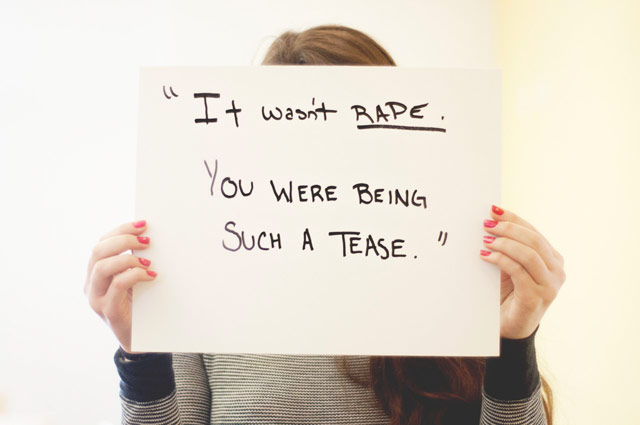
It's difficult to pick the yuckiest bottom-of-the-barrel sludge here, but the comments from the police officers really get my dander up.
"If you were my daughter I would have killed you." - Lady police officer while being interrogated
"If you don't tell us how many people you've slept with, the ADA won't even consider your case." - Interviewing Dectective
"This is why we have underage drinking laws! THIS IS YOUR FAULT! If you hadn't been drinking this wouldn't have happened to you!" - St. Petersburg police when I tried to press charges
Sickening, sickening. The police are supposed to protect the vulnerable, not persecute them. (via @rebeccablood)
After chatting with personal finance expert Helaine Olen, Harold Pollack wrote down all the personal finance advice you'll ever need on a 4x6 index card:

Unless you're an insider or get particularly lucky, you're just not going to beat this. (via ezra klein)
Looks like someone lost their drone in the West Village:
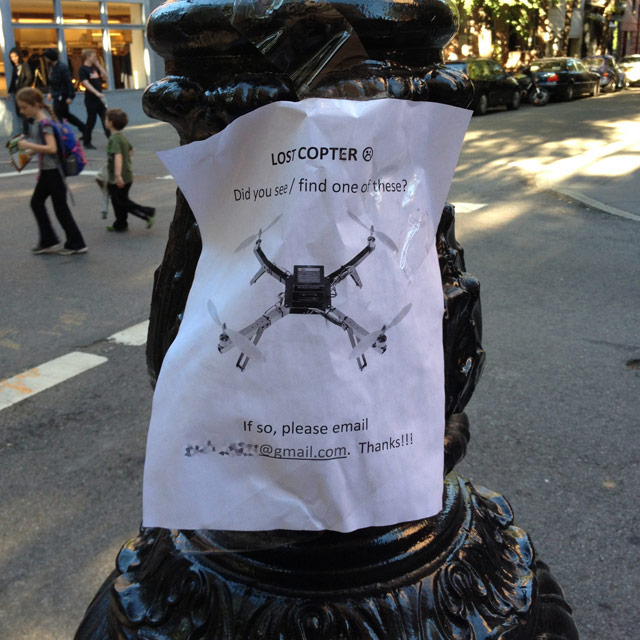
Pretty sure that drones falling from the skies in heavily populated metropolitan areas is going to lead to banning.
Ernest Hemingway liked a good burger and had a specific recipe he wanted his staff to use when preparing meals. Using his instructions, Cheryl Lu-Lien Tan recently recreated the Hemingway burger.
Fingers deep, I kneaded. Fighting the urge to be careless and quick, I kept the pace rhythmic, slow. Each squeeze, I hoped, would gently ease the flavors — knobby bits of garlic, finely chopped capers, smatterings of dry spices — into the marbled mound before me.
I had made burgers before, countless times on countless evenings. This one was different; I wasn't making just any burger — I was attempting to recreate Hemingway's hamburger. And it had to be just right.
Surprisingly, with 11 different ingredients, Hemingway's burger is not as stripped down as his prose. For a more minimalist burger, you have to turn to Dean Martin:
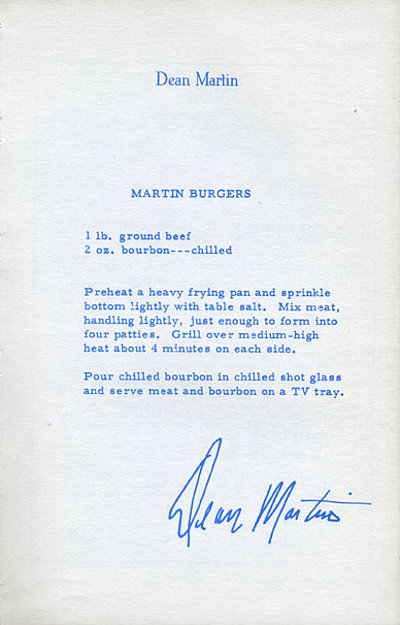
Frank Sinatra's is perhaps even easier:

One thing is for sure: none of these gentlemen would cotton to the idea of the ramen burger, homemade or no. (via open culture)
How risky is it to even wade a few inches into the gun rights debate? Just ask Starbucks CEO Howard Schultz. Today, he announced the company's policy that seeks to keep guns out of its cafes. Sort of.
Under the change, baristas and other store employees will not ask customers who come in with guns in holsters, say, to leave or confront them in any way, Mr. Schultz said. No signs explaining the policy will be posted in Starbucks stores, either.
According to Schultz: "We are going to serve them as we would serve anyone else." In other words, it's still a good idea to think twice before asking for another shot with your Frappuccino.
A Texas man was getting drunk without drinking alcohol and his doctors think they figured out why: brewer's yeast in his in gut was brewing beer and making the man intoxicated.
The patient had an infection with Saccharomyces cerevisiae, Cordell says. So when he ate or drank a bunch of starch — a bagel, pasta or even a soda — the yeast fermented the sugars into ethanol, and he would get drunk. Essentially, he was brewing beer in his own gut. Cordell and McCarthy reported the case of "auto-brewery syndrome" a few months ago in the International Journal of Clinical Medicine.
Some clever entrepreneur will undoubtedly turn this syndrome into a product...the market opportunity for a pill that allows you to get drunk on spaghetti *and* be the owner/operator of your own microbrewery is too large to ignore. (via ★interesting)
Former NY Times restaurant critic Frank Bruni writes about the joys of being a regular at your neighborhood restaurant.
What you have with a restaurant that you visit once or twice is a transaction. What you have with a restaurant that you visit over and over is a relationship.
My wife and I eat out at least once a week and we used to travel all over the city to try all sorts of different places, just-opened hot spots and old favorites alike. It was great. But now we mostly go to a bar/restaurant1 around the corner from where we live and that's even better. Bruni covers the experience pretty well, but I just wanted to share a couple of seemingly small aspects of being a regular:
1. Our local is popular and always crowded, especially during the dreaded 7-10pm hours and double especially Thu-Sat nights. But even when I go in by myself at a peak time, when the bar's jam-packed, there's always a seat for me. It might take a bit, but something opens up and they slot me in, even if I'm only stopping in for a drink and they could seat a two-top for dinner at the bar. (A regular in the hand is worth two in the rush.)
2. This is a totally minor thing but I love it: more than once, I've come in early in the evening, had a drink, left without paying to go run an errand or meet someone somewhere else, and then come back later for another drink or dinner and then settle my bill. It's like having a house account without the house account.
3. Another nice thing about being a regular at a place that values regulars is that you meet the other regulars. This summer I was often left to my own devices for dinner and a couple times a week, I ended up at my local. And almost without exception, I ended up having dinner with someone I'd previously met at the bar. Routinely turning a solo dining experience into dinner with a friend is an amazing accomplishment for a restaurant.
Something I read in one of food writer Jeffrey Steingarten's books has always stuck with me. He said there are certain restaurants he frequents that he never writes about critically. Those places are just for him and he would never recommend them to his readers. Having written for so long here on kottke.org, there are certain things I hold back, that are just for me. Having a public opinion on absolutely everything you love is no way to live.
So, no, I'm not going to tell you what restaurant I'm talking about. It's beside the point anyway...Bruni's not trying to persuade you to try Barbuto or Charlie Bird, it's about you finding your own local.↩
What does it feel like to soar majestically like an bird? Maybe something like this video, shot with a camera strapped to the back of an eagle flying near Chamonix in France.
See also first-person footage of a peregrine falcon diving and killing a duck in mid-air. (via @gavinpurcell)
Artist JK Keller took an episode of the Simpsons, ran the entire thing through some audio and video filters, and somehow it retains the full character of the show while also seeming like, as Keller puts it, "a frenetic mess of sight and sound".
After ripping all the frames, I used software to turn the ripped images into vectors. Then I processed the files through Illustrator using the default Alignment & Distribution tools (23 different combinations). With the audio, I used a similar process, making a spectrogram image of the audio from each cut in the episode. Then I applied a variety of processes to the image to mimic the alignment/distribution used.
When Shaquille O'Neal entered the NBA in 1992 after starring at LSU, people had already begun naming their children after him. 20-something years later, some of those kids are starting to play college basketball themselves. Ken Pomeroy is tracking the Shaq babies as they show up in their schools' line-ups and offers a look at the future of children named after NBA stars.
We can never know those reasons for sure, but we can say that since 1997, Kobe has been the name of choice for parents opting to name their children after basketball players. (Lebron has yet to crack the top 1000.) From this we can be confident we'll see the first-ever college basketball player named Kobe sometime in the 2016 to 2018 seasons. And while the supply of Shaqs will peter out right quick, Kobe's name will be appearing on college basketball rosters well into the 2030's. Kobe Bryant may have skipped college, but Kobe will be playing college basketball for many, many, many years to come.
In the parlance of NYC graffiti enthusiasts, going "all city" means getting your stuff known all over the five boroughs. Now a group of designers are challenging each other to go "all RGB", to make images that contain all of the 16.7 million colors that make up the RGB spectrum once each. This entry is amazing because it still looks like an actual photograph when you zoom out (many others do not):

You can find many more entries on allRGB.com or make your own using this code on GitHub. (via digg)
File this under "markets in everything": people will pay big money for US currency notes with interesting serial numbers.
In addition to the "low numbers," which stop at 100, there are "ladders," which have numbers in sequence, such as 12345678 or 54321098. These sell for as much as $1,300. A "radar" (selling for $20 to $40) is a palindrome, such as 35299253, and "repeaters" are notes with two blocks of the same four digits, like 41884188. Undis observes subcategories of each of these, such as "super radars" ($75 to $100) that have all internal digits the same, like 46666664.
And here I thought I was being pretty eagle-eyed by fishing a $2 bill out of the tip jar at the bagel place this morning. (via digg)
On the occasion of the latest New Yorker redesign, a worthy re-link to Michael Bierut's appreciation of the magazine's practice of slow design.
Publication design is a field addicted to ceaseless reinvention. Sometimes a magazine's redesign is generated by a change in editorial direction. More often, the motivation is commercial: the publisher needs to get the attention of fickle ad agency media buyers, and a new format — usually characterized as ever more "scannable" and "reader-friendly" — is just the thing. In contrast, one senses that each of the changes in The New Yorker was arrived at almost grudgingly. Designers are used to lecturing timid clients that change requires bravery. But after a certain point — 80 years? — not changing begins to seem like the bravest thing of all.
The New Yorker's design changes over the years have been so slight that, as Bierut notes, the latest issue looks remarkably like the first issue from 1925.
The Sweethome tested a bunch of locks, consulted with bike thieves, and sifted through other reviews and chose the best bike lock for your bike.
The consensus among those in the know was that a u-lock is best for virtually everyone, offering the highest ratio of security to portability. Unconventional devices like folding locks are intriguing, but so far none offer the security of a good u-lock. Chains sometimes offer a slight bump in security, but they often weigh twice as much and still relent to power tools. Let masochists wear belts of hardened steel; all our experts said a good u-lock is the sensible solution.
But before we talked specific lock models, they also insisted we slow down. Most people don't know how to use their locks, they said. Most people buy big, heavy expensive u-locks and then don't secure their bike's frame, or don't lock to an immobile object, or worse. Videos like this and this and this drive the point home.
Both the professional and petty thieves we talked to suggested that if a cyclist couldn't take his bike inside, he should lock his bike in a different spot each day, making it harder to case out. And they encouraged people to ride cheaper bikes. After all, the resale value of a bike — and its expensive components — is what makes the thing worth stealing.
Lex Friedman details how to use DNS services (like AdFree Time) to route around region-specific content locks, so you can do things like watch all NFL games in HD from anywhere, change Netflix regions (for access to different content), etc.
Third-party services like AdFree Time offer up a DNS-based solution: Pay a monthly fee and use their DNS services, and the NFL's website treats you as if you're coming from Europe. You thus get to watch every NFL game streaming online in high definition, since the league offers that option to folks in Europe at no charge. Americans, usually, miss out. I could pay for DirecTV's insanely overpriced Sunday Ticket, but I think it's a ripoff when I'm only looking to watch about six to eight Eagles games that won't show here.
This beats hate-reading the NFL TV maps every weekend.
Tim Pietrusky made an HTML/CSS version of the opening text crawl from Star Wars.
NASA created this lovely high resolution view of the Moon doing one complete rotation using footage from the Lunar Reconnaissance Orbiter.
(via @Colossal)
For the first time, researchers have put together all the climate data they have (from ice cores, coral, sediment drilling) into one chart that shows the "global temperature reconstruction for the last 11,000 years":

The climate curve looks like a "hump". At the beginning of the Holocene - after the end of the last Ice Age - global temperature increased, and subsequently it decreased again by 0.7 ° C over the past 5000 years. The well-known transition from the relatively warm Medieval into the "little ice age" turns out to be part of a much longer-term cooling, which ended abruptly with the rapid warming of the 20th Century. Within a hundred years, the cooling of the previous 5000 years was undone. (One result of this is, for example, that the famous iceman 'Ötzi', who disappeared under ice 5000 years ago, reappeared in 1991.)
What on Earth could have caused that spike over the past 250 years? A real head-scratcher, that. But also, what would have happened had the Industrial Revolution and the corresponding anthropogenic climate change been delayed a couple hundred years? The Earth might have been in the midst of a new ice age, Europe might have been too cold to support industry, and things may not have gotten going at all. Who's gonna write the screenplay for this movie? (via @CharlesCMann)
Paul Ford says that the Citi Bike is the perfect post-apocalyptic vehicle.
Citi Bikes thus also seems particularly well-suited for a sort of Hunger Games-style future: 1) The economy crashes utterly 2) poor, hungry people compete in hyperviolent Citi Bike chariot races at Madison Square Garden, now renamed Velodrome 17.
A trundling Citi Bike would make sense in just about any post-apocalyptic or dystopian book or movie. In the post-humanity 1949 George R. Stewart classic Earth Abides, about a Berkeley student who survives a plague, the bikes would have been very practical as people rebuilt society across generations, especially after electricity stopped working. And Walter M. Miller Jr.'s legendary 1960 A Canticle for Leibowitz, about monks rebuilding the world after "the Flame Deluge," could easily have featured monks pedaling around the empty desert after that deluge. Riding a Citi Bike (likely renamed something like "urbem vehentem") would probably have been a tremendous, abbot-level privilege, and the repair manual would have been an illuminated manuscript. It's gotten so that when I ride a Citi Bike I invariably end up thinking of all the buildings with their windows shattered, gray snow falling on people trudging in rags on their way to the rat market to buy a nice rat for Thanksgiving.
The universal availability of accurate synchronized time is taken for granted in most areas of the world today, but 'twas not always so. When Big Ben was built in 1859, charts were issued to show the allowance that had to be made for the sound of the bell, traveling at ~768 mph, to reach different parts of London. This one is from 1875:

Bigger version here. The correction at Paddington Station was 6 seconds, 8 seconds in Notting Hill, and 13 seconds at the Royal Greenwich Observatory, itself the seat of a fledgling universal time standard. (via @michalmigurski)
Every few months on the web, a new candidate emerges for the Bad-Ass Hall of Fame, a collection of amazing people who lived large, walked their own path, and left their mark on history with flair. Today's candidate is Mad Jack Churchill, a British Commando leader during World War II who died in 1996. Churchill fought in the war armed with a bow & arrows, a broadsword, and occasionally even bagpipes. Here's a photo of him (far right) during a training exercise in Scotland, sword in hand as he storms the beach:
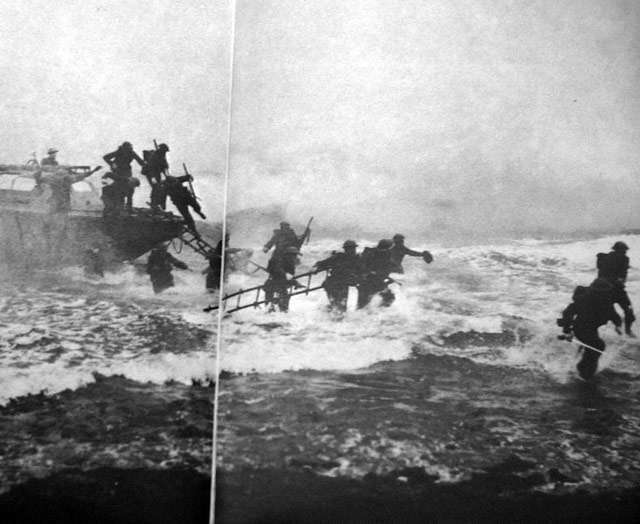
What a sight he must have been, leading charges branishing a sword and sucking on his pipes. Churchill even killed a German soldier in France with an arrow, recording the only known kill by bow in the war for the British. From a profile in WWII History magazine:
During the BEF's fighting retreat, Churchill remained aggressive, unwilling to give up a yard of ground while extracting the maximum cost from the enemy. He was especially fond of raids and counterattacks, leading small groups of picked soldiers against the advancing Germans. He presented a strange, almost medieval figure at the head of his men, carrying not only his war bow and arrows, but his sword as well.
As befitted his love of things Scottish, Churchill carried the basket-hilted claymore (technically a claybeg, the true claymore being an enormous two-handed sword). Later on, asked by a general who awarded him a decoration why he carried a sword in action, Churchill is said to have answered: "In my opinion, sir, any officer who goes into action without his sword is improperly dressed."
The war-diary of 4th Infantry Brigade, to which Churchill's battalion belonged, commented on this extraordinary figure. "One of the most reassuring sights of the embarkation [from Dunkirk] was the sight of Captain Churchill passing down the beach with his bows and arrows. His high example and his great work ... were a great help to the 4th Infantry Brigade."
And this bit sounds totally made up:
Churchill himself was far in front of his troopers. Sword in hand, accompanied only by a corporal named Ruffell, he advanced into the town itself. Undiscovered by the enemy, he and Ruffell heard German soldiers digging in all around them in the gloom. The glow of a cigarette in the darkness told them the location of a German sentry post. What followed, even Churchill later admitted, was "a bit Errol Flynn-ish."
The first German sentry post, manned by two men, was taken in silence. Churchill, his sword blade gleaming in the night, appeared like a demon from the darkness, ordered "haende hoch!" and got results. He gave one German prisoner to Ruffell, then slipped his revolver lanyard around the second sentry's neck and led him off to make the rounds of the other guards. Each post, lulled into a sense of security by the voice of their captive comrade, surrendered to this fearsome apparition with the ferocious mustache and the naked sword.
Altogether, Churchill and Corporal Ruffell collected 42 prisoners, complete with their personal weapons and a mortar they were manning in the village. Churchill and his claymore took the surrender of ten men in a bunch around the mortar. He and his NCO then marched the whole lot back into the British lines.
As Churchill himself described the event, it all sounded rather routine: "I always bring my prisoners back with their weapons; it weighs them down. I just took their rifle bolts out and put them in a sack, which one of the prisoners carried. [They] also carried the mortar and all the bombs they could carry and also pulled a farm cart with five wounded in it....I maintain that, as long as you tell a German loudly and clearly what to do, if you are senior to him he will cry 'jawohl' and get on with it enthusiastically and efficiently whatever the ... situation. That's why they make such marvelous soldiers..."
Crazy! After the war, he took up boat refurbishing, river surfing, and freaking out train passengers:
In his last job he would sometimes stand up on a train journey from London to his home, open the window and hurl out his briefcase, then calmly resume his seat. Fellow passengers looked on aghast, unaware that he had flung the briefcase into his own back garden.
Rest in peace, Mad Jack. (via today i found out)
Soon, new iPhone owners will be able to use a fingerprint to access a phone or buy something on iTunes. Apple's introduction of this fingerprint technology adds a nice layer of security and a bit of convenience for those whose fingers are too tired to type in a four-digit password. But soon, we will be interacting with a lot more devices that have no screens, and biometrics will be the logical way to secure our data. Companies have already developed ways to identify you, from your fingerprints to your heartbeat. And while these methods certainly seem more effective than simple (and often easy-to-hack) passwords, it's a little worrisome that we'll essentially be sharing even more personal data, right down to our person. In order to give us the promise of more security, companies will want to know even more about us. It feels like we've passed a point of no return. So much about us is stored in the cloud (our finances, our communication, our social lives) that we can't turn back. The only way to protect what you've shared so far is to share some more. Protect your data with a password. Protect the password with some secret, personal questions. Protect all of that with your fingerprint or your heartbeat. Before long, you'll have to give a DNA swab to access a collection photos you took yourself. It's a trend worth watching. The last decade was about sharing. The next decade will be about protecting.
Volume 1 of The Feynman Lectures on Physics is now available in HTML form. What a fantastic resource.
Nearly fifty years have passed since Richard Feynman taught the introductory physics course at Caltech that gave rise to these three volumes, The Feynman Lectures on Physics. In those fifty years our understanding of the physical world has changed greatly, but The Feynman Lectures on Physics has endured. Feynman's lectures are as powerful today as when first published, thanks to Feynman's unique physics insights and pedagogy. They have been studied worldwide by novices and mature physicists alike; they have been translated into at least a dozen languages with more than 1.5 millions copies printed in the English language alone. Perhaps no other set of physics books has had such wide impact, for so long.
Aided by four experts, The Wirecutter goes long on pens and picks a few winners.
The vast majority of people don't particularly care what they write with, but given that the difference between an awesome pen and a mediocre one is just a couple bucks, perhaps they should. A decent pen is something that just about anyone can buy and if you do a lot of handwriting, a marginally better writing experience compounded over hours of scribbling adds up to a significant improvement. And god forbid you end up not liking it, you're down just a few dollars — it's not the end of the world.
From this article I also learned that there are Kickstarter projects for alternate pen bodies that take popular pen cartridges.
Kevin Delaney, the head of Wayland High School's history department, gave his 11th grade students an interesting challenge: find out everything you can about the person who owned a dusty briefcase full of papers that Delaney had found in the storage room. The man, Martin Joyce, turned out to have a life that spanned many significant events in history and his story provided the students with a personal lens into history.
Inside were the assorted papers — letters, military records, photos — left behind by a man named Martin W. Joyce, a long-since deceased West Roxbury resident who began his military career as an infantryman in World War I and ended it as commanding officer of the liberated Dachau concentration camp. Delaney could have contacted a university or a librarian and handed the trove of primary sources over to a researcher skilled in sorting through this kind of thing. Instead, he applied for a grant, and asked an archivist to come teach his students how to handle fragile historical materials. Then, for the next two years, he and his 11th grade American history students read through the documents, organized and uploaded them to the web, and wrote the biography of a man whom history nearly forgot, but who nonetheless witnessed a great deal of it.
"Joyce became the thread that went through our general studies," Delaney says. "When we were studying World War I, we did the traditional World War I lessons and readings. And then stopped the clocks and thought, 'What's going on with Joyce in this period?'"
As the class repeatedly asked and answered that question, they slowly uncovered the life of a man who not only oversaw the liberated Dachau but also found himself a participant in an uncommon number of consequential events throughout Massachusetts and U.S. history. In a way Delaney couldn't have imagined when he first popped open the suitcase that day, Joyce would turn out to be something akin to Boston's own Forrest Gump — a perfect set of eyes through which to visit America's past.
Fantastic, what a great story. My favorite tidbit is that after all the wars and stuff, he and his wife were on the Andrea Doria when it was struck by the Stockholm and sunk. Part of the students' project was building a web site pertaining to Joyce's life and includes scans of all the papers they discovered...it's well worth looking through. (via @SlateVault)
When I was just out of college, my dad and I went to Beijing. One of my anxieties about the trip concerned my left-handedness, specifically going against the custom of not using your left hand (aka your bathroom hand) to eat. It turned out fine; the semi-expected reprimand never came.
Times have changed. Now, in Shanghai, you can go to a restaurant called Modern Toilet, which is actually one in a chain of Taiwanese stores that are toilet themed.

We are a group of "muckrakers" following our dreams. It all started when one of us was reading the manga, Dr. Slump on the toilet — and the rest is history. In the beginning, we mainly sold ice cream — a big pile of chocolate ice cream sold in containers shaped like a squat toilet. This humorous spin became a great success.
Susannah Breslin visited the Shanghai Modern Toilet and offers this report.
Upstairs, I took a seat at a table. My seat was a toilet. The table had a glass top. Under it, there was a bowl. In the bowl, there was a plastic swirly turd. The place mats were decorated with smiling turds.
(via @claytoncubitt)
Richard Swarbrick makes these great impressionist animations of sports events, mostly soccer but also cricket and basketball. Here's one to get you started...the 5-0 drubbing FC Barcelona handed to Real Madrid during a 2010 Clasico:
It's amazing how much Swarbrick's illustrations communicate with so few strokes...Mourinho's face is my favorite. Here's the actual match for comparison purposes. And here's Maradona's sublime goal against England in the 1986 World Cup (original video):
You can find many other examples of Swarbrick's work on his web site and on his YouTube channel. (via @dunstan)
The Hyperkin RetroN 5 is a retro gaming system that plays all your favorite games from NES, SNES, Super Famicom, Genesis, Mega Drive, Famicom, Game Boy, Game Boy Color, and GBA cartridges. I haven't heard anything about this (is it any good?), but I've got a lot of old games I'd like to play on it, starting with NHL '94. Pre-order at Amazon for $99. (via @cabel)
Well, sort of. Rowling is writing a screenplay for Warner Bros. based on a Hogwart's textbook called Fantastic Beasts and Where to Find Them.
Although it will be set in the worldwide community of witches and wizards where I was so happy for seventeen years, 'Fantastic Beasts and Where to Find Them' is neither a prequel nor a sequel to the Harry Potter series, but an extension of the wizarding world. The laws and customs of the hidden magical society will be familiar to anyone who has read the Harry Potter books or seen the films, but Newt's story will start in New York, seventy years before Harry's gets underway.
If you've watched a movie in the past 20 years, chances are you've seen the animation featuring the Pixar logo and Luxo Jr., the company's mascot. Luxo hops in, squashes the I, and takes its place; here's what it looks like:
According to the Pixar wiki, there have been several variations of the logo, including the one where Wall-E comes out to fix Luxo Jr's busted lightbulb:
Others include 20th and 25th anniversary versions, a 3D version that premiered with UP, and versions from Cars 2 and Finding Nemo that incorporate story elements into the logo.
This particular logo debuted with Toy Story in 1995. For the short films Pixar produced before that, they used variations on the not-very-exciting theme of circular indent in beveled square, a shape borrowed from the look of their Image Computer:
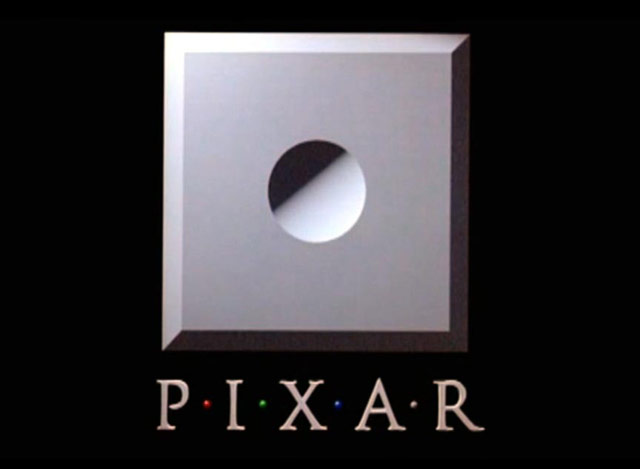
Many of the logo animation variations, including the pre-Luxo Jr. versions, can be seen in this video:
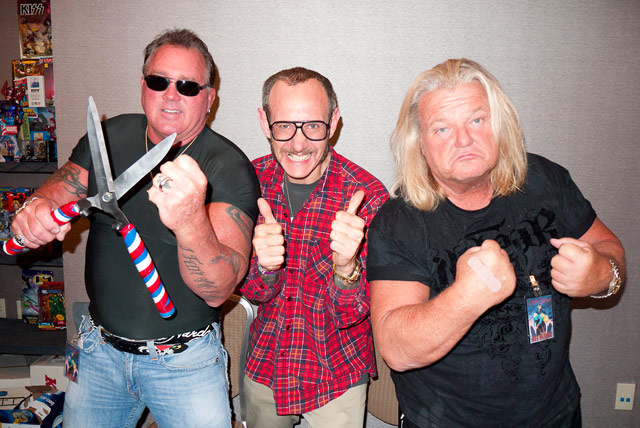
I watched a lot of pro wrestling when I was a kid and this photo of Brutus "The Barber" Beefcake, Greg "The Hammer" Valentine, and fashion photographer Terry Richardson is just too much for me. If nostalgia truly is death, someone better make some arrangements for me.
(If you're not with me on this whole reminiscing about 1980s professional wrestlers thing, Richardson also recently took a photo of Miley Cyrus eating a salad, so you're basically all caught up on current events and you're welcome.)
Watch as people review video games after eating hot peppers. Here's Erin Schmalfeld reviewing a Nintendo 3DS game after chewing and swallowing an entire habanero:
(via ★interesting)
BMX rider Tyrone Williams checks out a Citi Bike and puts it though its paces, first with a wheelie or two and eventually on a dirt track.
(via animal & @claytoncubitt)
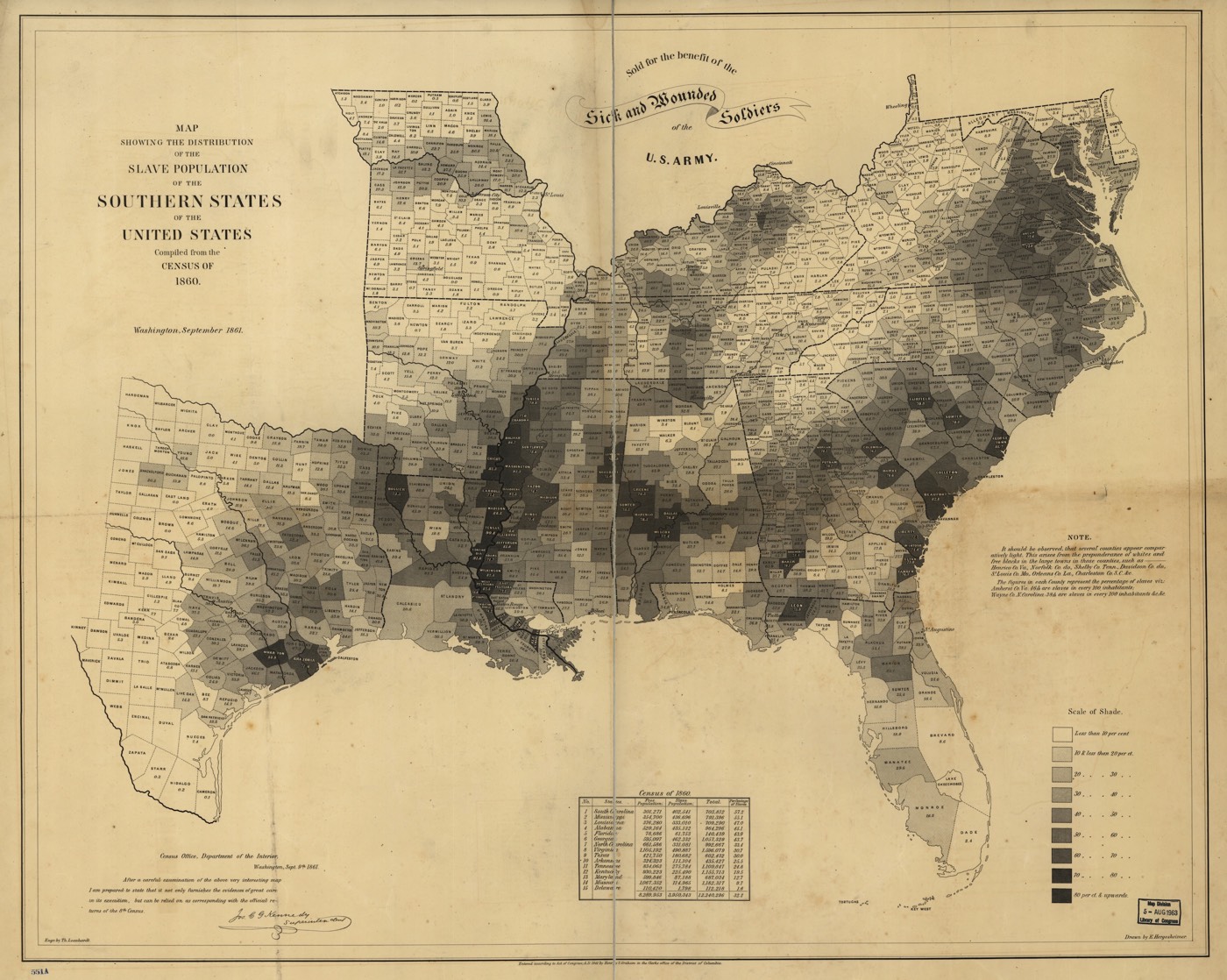
Using data from the 1860 US Census, the Department of the Interior made this map showing the percentages, by county, of the slave population of the southern states.
Though this map was simple, it showed the relationship between states' commitment to slavery and their enthusiasm about secession, making a visual argument about Confederate motivations.
Schulten writes that President Lincoln referred to this particular map often, using it to understand how the progress of emancipation might affect Union troops on the ground. The map even appears in the familiar Francis Bicknell Carpenter portrait First Reading of the Emancipation Proclamation of President Lincoln, visible leaning against a wall in the lower right-hand corner of the room.
Here's a larger version. The numbers in some locations are staggering and sickening — in many counties 75% of the population was enslaved and the rate is over 90% in a few places.
Paul Bogard recently published a book on darkness called The End of Night. Nicola Twilley and Geoff Manaugh interviewed Bogard about the book, the night sky, astronomy, security, cities, and prisons, among other things. The interview is interesting throughout but one of my favorite things is this illustration of the Bortle scale.

Twilley: It's astonishing to read the description of a Bortle Class 1, where the Milky Way is actually capable of casting shadows!
Bogard: It is. There's a statistic that I quote, which is that eight of every ten kids born in the United States today will never experience a sky dark enough to see the Milky Way. The Milky Way becomes visible at 3 or 4 on the Bortle scale. That's not even down to a 1. One is pretty stringent. I've been in some really dark places that might not have qualified as a 1, just because there was a glow of a city way off in the distance, on the horizon. You can't have any signs of artificial light to qualify as a Bortle Class 1.
A Bortle Class 1 is so dark that it's bright. That's the great thing-the darker it gets, if it's clear, the brighter the night is. That's something we never see either, because it's so artificially bright in all the places we live. We never see the natural light of the night sky.
I can also recommend reading David Owen's 2007 NYer piece on light pollution.

The apples that you buy at the market are all from the same species of plant, Malus domestica. Within that species, there are 7,500 different varieties (or cultivars) of apples. The list of apple cultivars includes Red Delicious, Macoun, Honeycrisp, Granny Smith, and the like. They look and taste different but are all recognizable as apples.
Brassica oleracea is a species of plant that, like the apple, has a number of different cultivars. But these cultivars differ widely from each other: cabbage, kale, broccoli, brussels sprouts, kohlrabi, collard greens, and cauliflower. Nutty that all those vegetables come from the same species of plant. (via @ajsheets)
This is a presentation and therefore missing a bunch of key context, but Michael Dearing's The Five Cognitive Distortions of People Who Get Stuff Done is interesting reading nonetheless. The five distortions are:
1. Personal exceptionalism
2. Dichotomous thinking
3. Correct overgeneralization
4. Blank canvas thinking
5. Schumpeterianism
That last one is likely a head-scratcher to those of us without economics backgrounds; here's what Dearing has to say about it:
Definition - sees creative destruction as natural, necessary, and as their vocation
Benefits - fearlessness, tolerance for destruction and pain
Deadly risk - heartless ambition, alienation
(via ★interesting)
Anthony Cerniello took photos of similar-looking family members at a reunion, from the youngest to the oldest, and edited them together in a video to create a nearly seamless portrait of a person aging in only a few minutes.
The effect is as if you sat a child down in front of a camera and filmed them continuously for 65 years and then compressed that down into a 5-minute time lapse. Colossal has an explanation:
Last Thanksgiving, Cerniello traveled to his friend Danielle's family reunion and with still photographer Keith Sirchio shot portraits of her youngest cousins through to her oldest relatives with a Hasselblad medium format camera. Then began the process of scanning each photo with a drum scanner at the U.N. in New York, at which point he carefully edited the photos to select the family members that had the most similar bone structure. Next he brought on animators Nathan Meier and Edmund Earle who worked in After Effects and 3D Studio Max to morph and animate the still photos to make them lifelike as possible. Finally, Nuke (a kind of 3D visual effects software) artist George Cuddy was brought on to smooth out some small details like the eyes and hair.
Fantastic.
Old people, like those who live to be older than 30, didn't exist in great numbers until about 30,000 years ago. Why is that? Anthropologist Rachel Caspari speculates that around that time, enough people were living long enough to function as a shared cultural hard drive for humans, a living memory bank for skills, histories, family trees, etc. that helped human groups survive longer.
Caspari says it wasn't a biological change that allowed people to start living reliably to their 30s and beyond. (When she looked at other populations of Neanderthals and Homo sapiens that lived in the same place and time, the two different species had similar proportions of old people, suggesting the change was not genetic.) Instead, it was culture. Something about how people were living made it possible to survive into old age, maybe the way they found or stored food or built shelters, who knows. That's all lost-pretty much all we have of them is teeth-but once humans found a way to keep old people around, everything changed.
Old people are repositories of information, Caspari says. They know about the natural world, how to handle rare disasters, how to perform complicated skills, who is related to whom, where the food and caves and enemies are. They maintain and build intricate social networks. A lot of skills that allowed humans to take over the world take a lot of time and training to master, and they wouldn't have been perfected or passed along without old people. "They can be great teachers," Caspari says, "and they allow for more complex societies." Old people made humans human.
What's so special about age 30? That's when you're old enough to be a grandparent. Studies of modern hunter-gatherers and historical records suggest that when older people help take care of their grandchildren, the grandchildren are more likely to survive. The evolutionary advantages of living long enough to help raise our children's children may be what made it biologically plausible for us to live to once unthinkably old ages today.
You planning on having a kid soon? Check out Sandor Weisz's new project, BornYet. When you register for the site, you get a subdomain (like is.rummicub.bornyet.com) that your friends can use to sign up for a birth announcement. When the time comes, it takes two seconds log into BornYet and send out an email blast with the pertinent info (like so). Pretty neat.
Speaking of inexpensive time travel, listen as David and Ben Crystal perform selections from Shakespeare in the original accent, as it would have been heard at the Globe in the early 1600s. (via @KBAndersen)
I have a soft spot for photography that reaches, seemingly impossibly, back into time...e.g. early color photography. It's an inexpensive form of time travel. The American Revolution took place back in the days before photography and the way we remember it visually is something like this:

But, some Revolutionary War participants lived long enough to have their daguerreotypes taken in the 1850s and 1860s. This is a photo of Lemuel Cook, the last official surviving veteran of the Revolution1, taken sometime before his death in 1866.

The source of many of these photos is a book published in 1864 by E.B. Hillard called The Last Men of the Revolution. The book contains six photos of surviving war vets and brief biographies of each man. (via @ftrain)
[1] Daniel Bakeman lived until 1869 but could not prove his service in the war. However, Congress passed a special act in 1867 that provided him with a war pension. Bakeman's longevity (he lived to 109) contributed to another astounding achievement: he and his wife Susan had the longest marriage on record, 91 years. Their marriage began 3 years before the Revolution and continued until Susan's death in 1863, right in the midst of the Civil War. Amazing. ↩
This is a bit of a mindblower...this software presented at SIGGRAPH Asia lets you pluck objects out of photos and edit them as if they were in 3D.
(via stellar)
But if New York City is better than ever — and we think it is — then why does it suck so bad?
The money, yes. And the cupcakes, and the ATMs, and all these apartments that somehow are in clock towers, which are all also just money. Among the young set, it's newcomers' parents paying up at our phantom tollbooth. There is now a class of New Yorkers with the luxury of not just money but also plenty of time. Once you got a crappy coffee at the deli or you didn't get coffee. Now the city is a wonderland of delicious pour-over. Every day is choose-your-own-adventure when you're not dying over the rent. Now there's a substantial population who thinks New York's a lark, or college 2.0, or an indie-lectual Rumspringa, a lazy not so Grand Tour before packing it in to get married in Dallas. Not to pick on the millennials: The olds aren't suffering either. Now a vast number of them pretend to live in the city while gardening at their second homes, in the sweet spread from Germantown to Ghent to Kinderhook. The result: New York has fewer who'd bleed for her. Once the city was for people who craved it with the stridency of a young Madonna. The result was entertainment, friction, mayhem, disaster, creation, magic.
(via @tcarmody)
It's NFL season again and it's time to tune into the NFL TV maps site to find out when your favorite team isn't on TV because the network is contractually obligated to show the pathetic Jets.
For more than a year, Julian Assange hasn't left Ecuador's London Embassy. But that hasn't limited his political reach or his social life as much as you'd imagine. From Vanity Fair's Sarah Ellison: The Man Who Came to Dinner.
Julian Assange hasn't set foot outside Ecuador's London embassy in more than a year-avoiding extradition to Sweden, where he faces allegations of sexual assault. But physical confinement seems only to enhance his reach. The WikiLeaks founder has video-addressed the U.N., launched a Senate campaign in absentia in his native Australia, entertained Lady Gaga, and played a key role in the case of N.S.A. leaker Edward Snowden. As several movies depict aspects of Assange's story, Sarah Ellison focuses on the center of his web.
Animator Hayao Miyazaki is retiring from making feature length films. At a press conference in Tokyo, he discussed why.
The director spoke about how his eye sight was getting worse, making it hard for him to create his animation. He also said how each year, he is leaving his desk earlier and earlier.
A reporter noted that Miyazaki's official retirement statement stated that he was retiring from making feature films. "As long as I can drive," Miyazaki replied, "I will be going to the studio every day. But if there's thing I want to do, then I will."
This year's The Wind Rises will be his last feature film. My Neighbor Totoro, Princess Mononoke, Spirited Away, Ponyo, and many more...that's quite a body of work.
Edward Snowden's leak of NSA documents keeps paying dividends. The latest report (in the Guardian, the NY Times, and Pro Publica) alleges that the NSA has cracked or circumvented many of the internet security protocols designed to keep communications private from third parties. From the Pro Publica piece:
The National Security Agency is winning its long-running secret war on encryption, using supercomputers, technical trickery, court orders and behind-the-scenes persuasion to undermine the major tools protecting the privacy of everyday communications in the Internet age, according to newly disclosed documents.
The agency has circumvented or cracked much of the encryption, or digital scrambling, that guards global commerce and banking systems, protects sensitive data like trade secrets and medical records, and automatically secures the e-mails, Web searches, Internet chats and phone calls of Americans and others around the world, the documents show.
Many users assume — or have been assured by Internet companies — that their data is safe from prying eyes, including those of the government, and the N.S.A. wants to keep it that way. The agency treats its recent successes in deciphering protected information as among its most closely guarded secrets, restricted to those cleared for a highly classified program code-named Bullrun, according to the documents, provided by Edward J. Snowden, the former N.S.A. contractor.
Cryptographer Matthew Green speculates on exactly how the NSA might have achieved these results and what the implications are.
Probably the biggest concern in all this is the evidence of collaboration between the NSA and unspecified 'telecom providers'. We already know that the major US (and international) telecom carriers routinely assist the NSA in collecting data from fiber-optic cables. But all this data is no good if it's encrypted.
While software compromises and weak standards can help the NSA deal with some of this, by far the easiest way to access encrypted data is to simply ask for — or steal — the keys. This goes for something as simple as cellular encryption (protected by a single key database at each carrier) all the way to SSL/TLS which is (most commonly) protected with a few relatively short RSA keys.
If you're concerned about the privacy of your communications, security expert Bruce Schneier has some suggestions for keeping secure.
1) Hide in the network. Implement hidden services. Use Tor to anonymize yourself. Yes, the NSA targets Tor users, but it's work for them. The less obvious you are, the safer you are.
2) Encrypt your communications. Use TLS. Use IPsec. Again, while it's true that the NSA targets encrypted connections — and it may have explicit exploits against these protocols — you're much better protected than if you communicate in the clear.
Matt Duron is a self-proclaimed "guy's guy" who has a son who is "gender creative" (love that phrase) and wants to be treated like a girl.
My wife also gets a load of emails from people asking where our son's father is, as though I couldn't possibly be around and still allow a male son to display female behavior. To those people I say, I'm right here fathering my son. I want to love him, not change him. My son skipping and twirling in a dress isn't a sign that a strong male figure is missing from his life, to me it's a sign that a strong male figure is fully vested in his life and committed to protecting him and allowing him to grow into the person who he was created to be.
I may be a "guy's guy," but that doesn't mean that my son has to be.
More parents like this please.
Solving the traveling salesman problem is difficult enough without having to consider the happiness of the salesman. But Tom Vanderbilt reports that's essentially what UPS, FedEx, and the like have had to do.
People are also emotional, and it turns out an unhappy truck driver can be trouble. Modern routing models incorporate whether a truck driver is happy or not — something he may not know about himself. For example, one major trucking company that declined to be named does "predictive analysis" on when drivers are at greater risk of being involved in a crash. Not only does the company have information on how the truck is being driven — speeding, hard-braking events, rapid lane changes — but on the life of the driver. "We actually have built into the model a number of indicators that could be surrogates for dissatisfaction," said one employee familiar with the program.
This could be a change in a driver's take-home pay, a life event like a death in the family or divorce, or something as subtle as a driver whose morning start time has been suddenly changed. The analysis takes into account everything the company's engineers can think of, and then teases out which factors seem correlated to accident risk. Drivers who appear to be at highest risk are flagged. Then there are programs in place to ensure the driver's manager will talk to a flagged driver.
In other words, the traveling salesman problem grows considerably more complex when you actually have to think about the happiness of the salesman. And, not only do you have to know when he's unhappy, you have to know if your model might make him unhappy. Warren Powell, director of the Castle Laboratory at Princeton University's Department of Operations Research and Financial Engineering, has optimized transportation companies from Netjets to Burlington Northern. He recalls how, at Yellow Freight company, "we were doing things with drivers — they said, you just can't do that." There were union rules, there was industry practice. Tractors can be stored anywhere, humans like to go home at night. "I said we're going to need a file with 2,000 rules. Trucks are simple; drivers are complicated."
Robin Nagle, the Anthropologist in Residence for the New York City Department of Sanitation, recently wrote a book about the city's sanitation department. Collectors Weekly has an interview with Nagle about the book and sanitation in general.
Waring also dressed the workers in white, and even his wife said, 'What, are you crazy?' But he wanted them to be associated with notions of hygiene. Of course, those in the medical profession wore white, and he understood, quite rightly, that it was an issue of public health and hygiene to keep the street clean. He also put them in the helmets that the police wore to signify authority, and they quickly were nicknamed the White Wings.
These men became heroes because, for the first time in anyone's memory, they actually cleaned the city. It was a very bright day in the history of the department. Waring was only in office for three years, but after he left, nobody could use the old excuses that Tammany had used to dodge the issue of waste management. They had always said it was too crowded, with too many diverse kinds of people, and never mind that London and Paris and Philadelphia and Boston cleaned their streets. New York was different and it just couldn't be done. Waring proved them wrong. Rates of preventable disease went down. Mortality rates went down. It also had a ripple effect across all different areas of the city.
Now, NYC is not the cleanest city in the world, not by a long-shot, but it used to be so much worse. In the early 1890s, the streets were literally covered in trash because the Department of Street Cleaning (as it was known then) was so inept; look at the difference made by a 1895 reorganization of the department:

Hanna Rosin writes about Murder by Craigslist, the story of a killer who advertised for victims on Craigslist in order to steal their possessions.
Davis wasn't the only person to answer the Craigslist ad. More than 100 people applied for the caretaker job — a fact that Jack was careful to cite in his e-mails back to the applicants. He wanted to make sure that they knew the position was highly sought-after. Jack had a specific type of candidate in mind: a middle-aged man who had never been married or was recently divorced, and who had no strong family connections. Someone who had a life he could easily walk away from. "If picked I will need you to start quickly," he would write in his e-mails.
Jack painstakingly designed the ad to conjure a very particular male fantasy: the cowboy or rancher, out in the open country, herding cattle, mending fences, hunting game — living a dream that could transform a post-recession drifter into a timeless American icon. From the many discarded drafts of the ad that investigators later found, it was clear that Jack was searching for just the right pitch to catch a certain kind of man's eye. He tinkered with details-the number of acres on the property, the idea of a yearly bonus and paid utilities-before settling on his final language: "hilly," "secluded," "job of a lifetime." If a woman applied for the job, Jack wouldn't bother responding. If a man applied, he would ask for the critical information right off the bat: How old are you? Do you have a criminal record? Are you married?
Jack seemed drawn to applicants who were less formal in their e-mail replies, those who betrayed excitement, and with it, vulnerability. "I was raised on a farm as a boy and have raised some of my own cattle and horses as well," wrote one. "I'm still in good shape and not afraid of hard work! I really hope you can give me a chance. If for some reason I wouldn't work out for you no hard feelings at all. I would stick with you until you found help. Thank you very much, George."
This was your standard well-written crime story until about 2/3rds of the way through when Rosin highlights a societal trend that more deeply connects the victims with their killer.
I was initially drawn to the story of the Beasley murders because I thought it would illuminate the isolation and vulnerability of so many working-class men, who have been pushed by the faltering economy from one way of life — a nine-to-five job, a wife, children — into another, far more precarious one: unemployed or underemployed, single or divorced, crashing on relatives' spare beds or in the backseats of cars. At what other moment in history would it have been plausible for a serial killer to identify middle-aged white men as his most vulnerable targets?
But what I discovered in the course of my reporting was something quite different. As traditional family structures are falling apart for working-class men, many of them are forging new kinds of relationships: two old high-school friends who chat so many times a day that they need to buy themselves walkie-talkies; a father who texts his almost-grown sons as he goes to bed at night and as he wakes up in the morning.
There's a bit more to it than but I don't want to spoil it for you...the entire piece is worth a read.
I loved reading CEO Jonah Peretti's most recent memo to the team at Buzzfeed.
But there are many exciting, tempting, glamorous, lucrative opportunities that we will NOT do in the coming year and as more of these opportunities present themselves it will take discipline to stay on track. We will NOT launch a BuzzFeed TV show, radio station, cable network, or movie franchise — we'll leave that to the legacy media and Hollywood studios. We will NOT launch a white labeled version of BuzzFeed to power other sites or a BuzzFeed social network — we'll leave that to pure tech companies in Silicon Valley. We will NOT launch a print edition or a paywall or a paid conference business — we'll leave that to other publications. We have a great business model that has a bright future as social and mobile continue to become the dominate form of media consumption. We will stay away from anything that requires adopting a legacy business model, even a lucrative one like cable syndication fees or prime time television ads. What seems like a lucrative opportunity today is often a distraction from building something much more exciting tomorrow. We need to stay patient and focused.
Here's his 2012 memo. I've worked at a desk in the Buzzfeed office for as long as they've had an office (Fay Da posse represent!), and it's been fascinating watching Jonah and his team turn a big idea and small blog into a media juggernaut.
Here's a medley of isolated vocals from the Beatles' Abbey Road:
Many more isolated vocal tracks are available on this subreddit. Here are the instructions for making your own isolated vocal tracks with Audacity, the same open source audio processing app that Tim used to make his slow jams. (thx, tim)
Justine Sharrock asked prisoners incarcerated at San Quentin State Prison to describe the internet. The men had just taken part in a program to help them reintegrate into society, and though they hadn't used the internet themselves, they had more of a theoretical understanding of it. Chrisfino Kenyatta Leal entered prison in 1994:
I envisioned the web to be like this infinite space filled with information about everything under the sun.
I was confused about how you got from one piece of info to the next and I was clueless in terms of the lingo used to describe it all...
The technical aspects of it make me go, Hmmmm? I realize everything is getting faster and moving toward mobile, so I often wonder about who's doing all this stuff and where is it all taking place?
The book trailer for Thomas Pynchon's new novel is either brilliant or the dumbest thing ever.
Fun fact: the phrase "I don't even" was invented to react to this video. (via @GreatDismal)
Inside the Monster is a 25-minute documentary (in French w/ English subtitles) on Teahupo'o, a Tahitian locale known for its spectacular waves.
Crazy the way those waves rise out of almost nowhere. My favorite photo of Teahupo'o is this one (view larger):
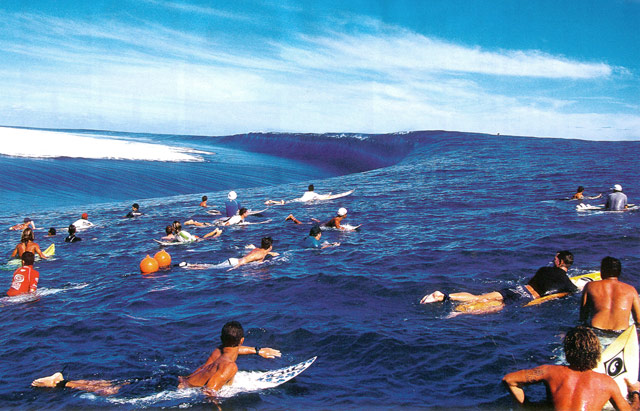
All that water hanging out 14 feet higher than it should be....it ain't natural!
Powers of Ten is now a Foursquare venue. Go there, lay down on the grass, and upload a photo of yourself in the Powers of Ten pose.
Lie on the ground on a sunny day with one hand draped across your torso to recreate the starting point of the film Powers Of Ten by Charles and Ray Eames.
Chicagoans and visitors to Chicagoland, let's make this a thing. (via ★interesting-links)
This video seems like it was made specifically for kottke.org. In the first half of it, you learn how cranberries are harvested. In the second half, there's gorgeous HD slo-mo footage of wakeskating through a cranberry bog.
And with a Tycho soundtrack no less...it's all too perfect. (via ★interesting)
An interesting look at how news of the Declaration of Independence spread through the American colonies and around the world. Because trans-Atlantic journeys took awhile back when, the first European news of the Declaration was almost a month and a half after July 4.
News of American independence reached London the second week of August via the Mercury packet ship, which sailed with important correspondence from General William Howe to Lord George Germain, dated July 7 and 8, at Staten Island. The London Gazette, the official Crown organ, first broke the news in its Saturday, August 10 edition. A 16-word, 106-character, Twitter-esque extract from a Howe letter read: "I am informed that the Continental Congress have declared the United Colonies free and independent States."
Later that day, the London Evening-Post included its own version of the breaking news: "Advice is received that the Congress resolved upon independence the 4th of July; and have declared war against Great Britain in form." The same blurb appeared in the Tuesday, August 13 issue of the London Chronicle. On Wednesday, the Morning Chronicle and London Advertiser printed "Copies of the Declarations of War by the Provincials are now in Town and are said to be couched in the strongest terms."
Another fine post by Todd Andrlik, who recently wrote about the ages of prominent Revolutionary War participants. I'm currently reading Tom Standage's book about the history of social media and this story would fit right in.
In 1953, the BBC filmed a train trip from London to Brighton. Thirty years later in 1983, they filmed it again and then again 30 years after that, in 2013. Here are all three films synced up and played side-by-side:
1000 extra bonus points to the Beeb for the Star Guitar soundtrack.
From Stanley Kubrick, instructions to the new guy concerning the preparation of his French toast.
You must understand that without the French toast I am no good to the cast and crew. And I will not eat the French toast if it is not prepared the right way. If I do not eat the French toast, my blood sugar will drop to precariously low levels, and I will be groggy and unable to make the necessary split-second decisions a director has to make in order for a film to be successful. Therefore, it is essential that you understand something about the French toast: it is not only my breakfast, it is the film.
Vice has a sneak peak at Errol Morris' new documentary on Donald Rumsfeld, in what looks like a sequel of sorts to The Fog of War.
Morris has Rumsfeld perform and explain his "snowflakes," the enormous archive of memos he wrote across almost 50 years in Congress, the White House, in business, and twice at the Pentagon. The memos provide a window into history — not as it actually happened, but as Rumsfeld wants us to see it.
Jesus, that little smile at the end. The Daily Beast has an interview with Morris about the film.
THE DAILY BEAST: How the hell did you get Rumsfeld to agree to do this? Were you chasing him down?
ERROL MORRIS: No, not at all. I wrote him a letter, enclosed a copy of The Fog of War, heard back from him very quickly, went to Washington, and spent a good part of the day with him. We started it under the premise that he would do two days of interviews, I would edit it, and if he liked it, we'd sign a contract and continue. If he didn't, I'd put the footage in a closet and it would never see the light of day.
The name of the film, The Unknown Known, is a reference to a statement Rumsfeld made at a press briefing about WMDs, terrorism, and Iraq:
There are known knowns; there are things we know that we know. There are known unknowns; that is to say, there are things that we now know we don't know. But there are also unknown unknowns — there are things we do not know we don't know.
The world according to @darth orig. from Aug 30, 2013
* Q: Wha? A: These previously published entries have been updated with new information in the last 24 hours. You can find past updates here.